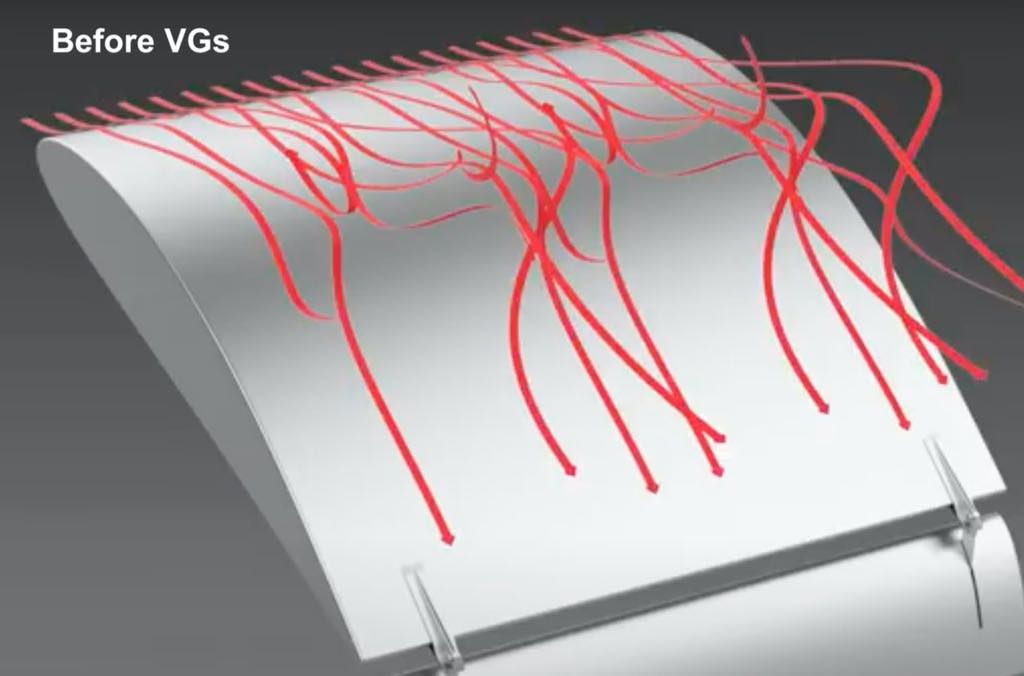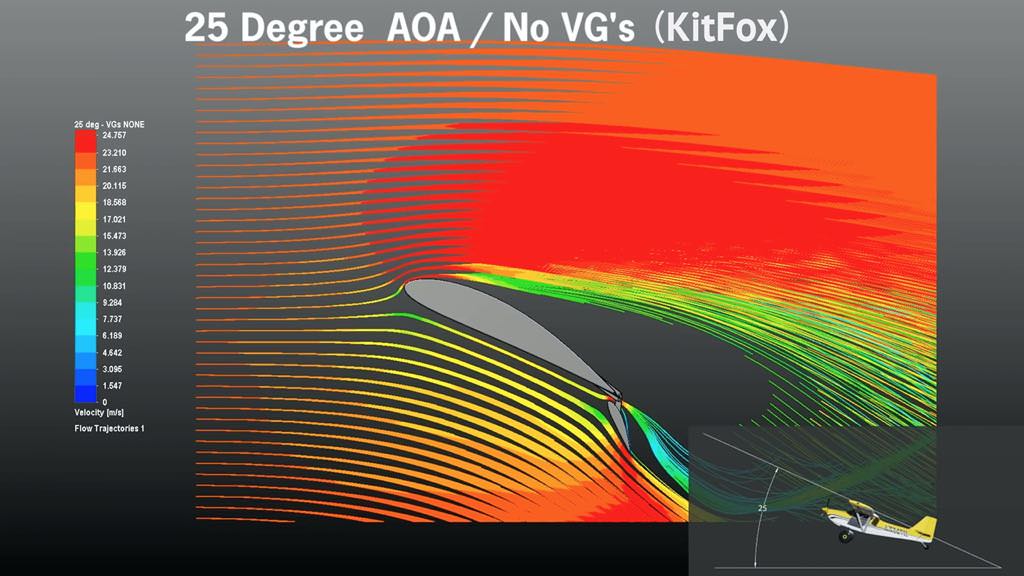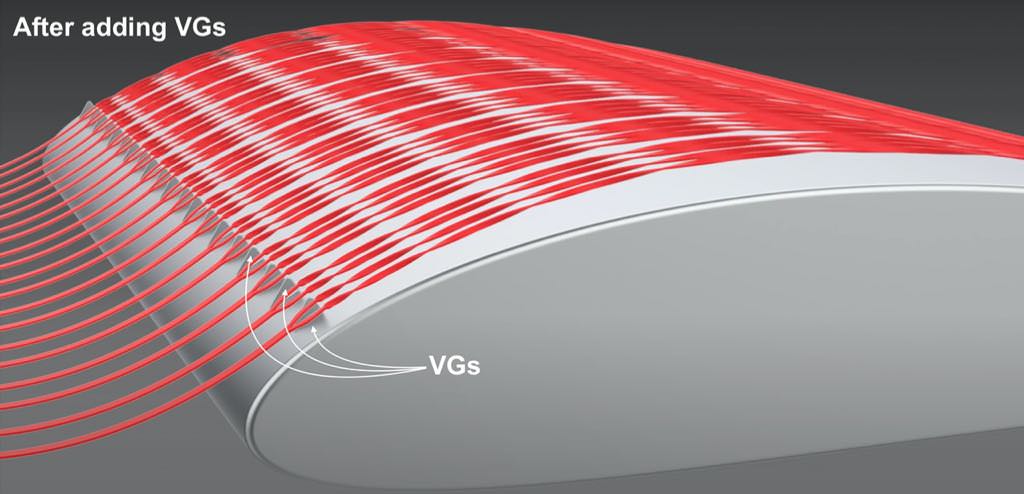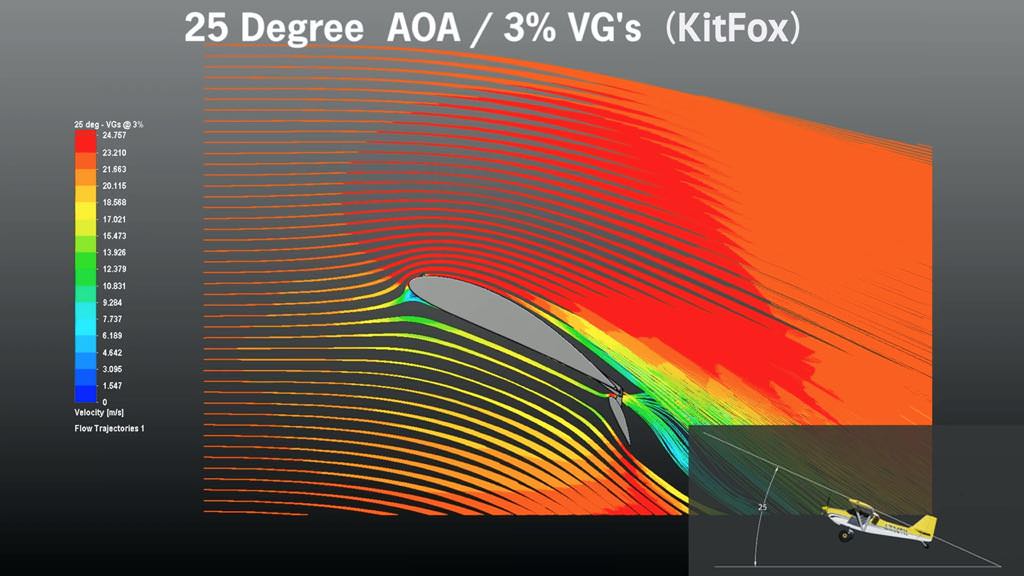Why Vortex Generators (VGs)?
A very thin layer of air lying over the surface of the wing, called the boundary layer, tends to adhere to the wing as it flows smoothly over the streamlined shape of the airfoil. But as the boundary layer approaches the center of the wing, it begins to lose speed due to skin friction and it becomes thicker and turbulent. At the point where the boundary layer becomes turbulent, drag due to skin friction is relatively high (Machado, 2022).
As speed increases, the point where the boundary layer becomes turbulent tends to move forward toward the leading edge of the wing. Likewise, as the angle of attack increases, the point of turbulence also tends to move forward. With higher angles of attack and further thickening of the boundary layer, turbulence becomes so great that the flow of air breaks away from the surface of the wing. At this point, the lift of the wing is destroyed and a stall has occurred (Machado, 2022).
before installing VGs


after VGs


Installing low-profile vane-type vortex generators (VGs) placed reasonably close upstream of the baseline separation will produce stream-wise vortices, just strong enough to overcome the baseline separation without unnecessarily persisting within the boundary layer once flow attachment is achieved (Lin, 2002).
Each VG creates a pencil-thin tornado-like cone of swirling air that stimulates and organizes the turbulent flow of the boundary layer on the aft portion of the wing. The swirl of the vortices pull fast-moving air down through the boundary layer into close proximity to the wing surface, energizing the previously-dead air there. The result is a wing that can fly at significantly higher angles of attack before the onset of boundary layer separation, and can therefore achieve a significantly higher maximum lift coefficient (Busch, n.d.).
The comprehensive review on low-profile vortex generators by Lin (2002) shows that small vortex generators are just as effective in preventing separation as the normal sized devices, presumably including the GlaStar's delta-wing vortex generators. In contrast, wing fences offer little to no improvement in aircraft auto-rotational characteristics in the leadup to a spin (Newsom, Satran, and Johnson, 1982), and thus were not considered for inclusion in this project.
Illustrations from: How do Vortex Generators work on the Kitfox wing? Where to place them? (Sessa, 2019)
DISCLAIMER
YOU ACKNOWLEDGE AND AGREE THIS INFORMATION IS PROVIDED ON AN "AS IS" AND "AS AVAILABLE" BASIS. YOU EXPRESSLY AGREE THAT USE OF THIS INFORMATION IS AT YOUR SOLE RISK. WE EXPRESSLY DISCLAIM ALL WARRANTIES OF ANY KIND, WHETHER EXPRESS OR IMPLIED, INCLUDING, BUT NOT LIMITED TO, THE IMPLIED WARRANTIES OF MERCHANTABILITY, FITNESS FOR A PARTICULAR PURPOSE, AND NON-INFRINGEMENT. WE MAKE NO WARRANTY AS TO THE QUALITY OF INFORMATION PROVIDED HEREIN.
For more see Privacy Statement.